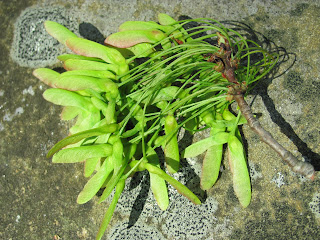As we enter peak tomato season, we are seeing more Blossom End Rot than normal. This is not a disease caused by a fungus or bacteria, but by environmental conditions that may or may not be under our control. Just as those first tomatoes turn red, the end farthest from the stem (where the shriveled blossom may still be present) turns black - dashing our hopes for a juicy tomato sandwich.
In my book, preventing Blossom End Rot comes down to something often overlooked - growing a healthy root system. Blossom End Rot only develops when plants experience the extremes of soil moisture (both too much & too little). Roots die back under both conditions & cannot recover to keep up with fast-growing plants. Technically, tomatoes are not taking up enough calcium for rapidly growing fruits, but unless your soil is seriously depleted, it's the fluctuating moisture levels & struggling roots that tip the scale in favor of this disease.
Usually, all that's needed is a reminder to mulch gardens & water plants during dry weather. I think more people are experiencing this problem in 2012 because of this year's early weather. Tomatoes are warm-season plants. While we were breaking out shorts & tank tops this spring and planting our gardens, the soil was probably still too cold to result in a good root system. If nitrogen fertilizer was applied to speed up growth, plants grew rapidly above-ground at the expense of the roots. Forecasts of rain didn't materialize so we watered after plants were already water-stressed. In some cases, the use of black plastic mulch (popular in our area) made monitoring soil moisture a guessing game.
The good news is that this is an early-season problem - meaning it generally affects the first fruit. You can still get good tomatoes if you mulch & address water issues. Just be sure to mulch with a material that allows water to slowly penetrate into your soil. This type of mulch makes what water you receive from nature available longer to your tomatoes - a thick layer of straw, newspaper, or wood chips will do the trick. If you've seen Blossom End Rot in your garden this year and are doing everything else right, be sure to check your soil pH and add lime this fall if test results call for it. (target pH = 6.5)
Blossom End Rot on Tomatoes













